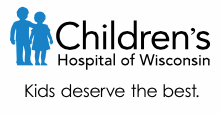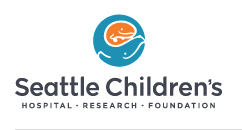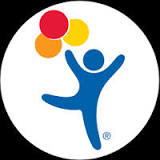Treosulfan and Fludarabine Phosphate Before Donor Stem Cell Transplant in Treating Patients With Nonmalignant Inherited Disorders
| Status: | Recruiting |
|---|---|
| Conditions: | Cancer |
| Therapuetic Areas: | Oncology |
| Healthy: | No |
| Age Range: | Any - 49 |
| Updated: | 2/8/2019 |
| Start Date: | July 31, 2009 |
Allogeneic Hematopoietic Cell Transplantation for Patients With Nonmalignant Inherited Disorders Using a Treosulfan Based Preparative Regimen
This phase II clinical trial studies how well treosulfan and fludarabine phosphate with or
without low dose radiation before donor stem cell transplantation works in treating patients
with nonmalignant (noncancerous) diseases. Hematopoietic cell transplantation has been shown
to be curative for many patients with nonmalignant (noncancerous) diseases such as primary
immunodeficiency disorders, bone marrow failure syndromes, hemoglobinopathies, and inborn
errors of metabolism (metabolic disorders). Powerful chemotherapy drugs and/or radiation are
often used to condition the patient before infusion of the new healthy donor cells. The
purpose of the conditioning therapy is to destroy the patient's abnormal bone marrow which
doesn't work properly in order to make way for the new healthy donor cells which functions
normally. Although effective in curing the patient's disease, many hematopoietic cell
transplantation regimens use intensive chemotherapy and/or radiation which can be quite
toxic, have significant side effects, and can potentially be life-threatening. Investigators
are investigating whether a new conditioning regimen that uses less intensive drugs
(treosulfan and fludarabine phosphate) with or without low dose radiation results in new
blood-forming cells (engraftment) of the new donor cells without increased toxicities in
patients with nonmalignant (noncancerous) diseases.
without low dose radiation before donor stem cell transplantation works in treating patients
with nonmalignant (noncancerous) diseases. Hematopoietic cell transplantation has been shown
to be curative for many patients with nonmalignant (noncancerous) diseases such as primary
immunodeficiency disorders, bone marrow failure syndromes, hemoglobinopathies, and inborn
errors of metabolism (metabolic disorders). Powerful chemotherapy drugs and/or radiation are
often used to condition the patient before infusion of the new healthy donor cells. The
purpose of the conditioning therapy is to destroy the patient's abnormal bone marrow which
doesn't work properly in order to make way for the new healthy donor cells which functions
normally. Although effective in curing the patient's disease, many hematopoietic cell
transplantation regimens use intensive chemotherapy and/or radiation which can be quite
toxic, have significant side effects, and can potentially be life-threatening. Investigators
are investigating whether a new conditioning regimen that uses less intensive drugs
(treosulfan and fludarabine phosphate) with or without low dose radiation results in new
blood-forming cells (engraftment) of the new donor cells without increased toxicities in
patients with nonmalignant (noncancerous) diseases.
PRIMARY OBJECTIVES:
I. To evaluate, within the limits of a phase II study, the preliminary efficacy as defined by
engraftment, of a regimen consisting of treosulfan and fludarabine (fludarabine phosphate)
followed by allogeneic hematopoietic cell transplant (HCT) in patients with nonmalignant
inherited disorders.
SECONDARY OBJECTIVES:
I. To evaluate the incidence of non-relapse mortality 200 days and 1 year post-HCT.
II. To evaluate the incidence of grade II-IV acute graft-versus-host disease (GVHD).
III. To evaluate the incidence of chronic GVHD as defined as those patients requiring
systemic immunosuppression.
IV. To evaluate donor chimerism on days +28 and +100.
V. To assess disease response following HCT.
VI. To evaluate immune reconstitution following HCT.
VII. To evaluate the incidence of infections.
VIII. To evaluate overall survival.
OUTLINE:
CONDITIONING REGIMEN: Patients receive treosulfan intravenously (IV) over 2 hours on days -6
to -4 and fludarabine phosphate IV over 1 hour on days -6 to -2. Patients receive
anti-thymocyte globulin IV over 4-6 hours on days -4 to -2. Patients undergoing umbilical
cord blood transplantation will also receive low dose total-body irradiation on day -1.
TRANSPLANTATION: Patients receive either bone marrow, peripheral blood stem cells (PBSC), or
umbilical cord blood (UCB) from the donor on day 0. The use of either bone marrow, PBSC, or
umbilical cord blood will depend on the donor status.
IMMUNOSUPPRESSION: Patients receive a combination of immunosuppressive medications to try and
prevent graft-versus-host disease. There are 2 regimens depending on the donor.
Regimen A: Patients undergoing bone marrow or PBSC transplantation receive tacrolimus daily
from day -1 to 50 followed by a taper until day 180 in the absence of GVHD. Patients also
receive methotrexate IV on days 1, 3, 6, and 11.
Regimen B: Patients undergoing UCB transplantation receive cyclosporine on days -3 to 100
followed by a taper until day 180 in the absence of GVHD. Patients also receive mycophenolate
mofetil on days 0 to 40 followed by a taper until day 96 in the absence of GVHD.
After completion of study treatment, patients are followed up periodically for 5 years.
I. To evaluate, within the limits of a phase II study, the preliminary efficacy as defined by
engraftment, of a regimen consisting of treosulfan and fludarabine (fludarabine phosphate)
followed by allogeneic hematopoietic cell transplant (HCT) in patients with nonmalignant
inherited disorders.
SECONDARY OBJECTIVES:
I. To evaluate the incidence of non-relapse mortality 200 days and 1 year post-HCT.
II. To evaluate the incidence of grade II-IV acute graft-versus-host disease (GVHD).
III. To evaluate the incidence of chronic GVHD as defined as those patients requiring
systemic immunosuppression.
IV. To evaluate donor chimerism on days +28 and +100.
V. To assess disease response following HCT.
VI. To evaluate immune reconstitution following HCT.
VII. To evaluate the incidence of infections.
VIII. To evaluate overall survival.
OUTLINE:
CONDITIONING REGIMEN: Patients receive treosulfan intravenously (IV) over 2 hours on days -6
to -4 and fludarabine phosphate IV over 1 hour on days -6 to -2. Patients receive
anti-thymocyte globulin IV over 4-6 hours on days -4 to -2. Patients undergoing umbilical
cord blood transplantation will also receive low dose total-body irradiation on day -1.
TRANSPLANTATION: Patients receive either bone marrow, peripheral blood stem cells (PBSC), or
umbilical cord blood (UCB) from the donor on day 0. The use of either bone marrow, PBSC, or
umbilical cord blood will depend on the donor status.
IMMUNOSUPPRESSION: Patients receive a combination of immunosuppressive medications to try and
prevent graft-versus-host disease. There are 2 regimens depending on the donor.
Regimen A: Patients undergoing bone marrow or PBSC transplantation receive tacrolimus daily
from day -1 to 50 followed by a taper until day 180 in the absence of GVHD. Patients also
receive methotrexate IV on days 1, 3, 6, and 11.
Regimen B: Patients undergoing UCB transplantation receive cyclosporine on days -3 to 100
followed by a taper until day 180 in the absence of GVHD. Patients also receive mycophenolate
mofetil on days 0 to 40 followed by a taper until day 96 in the absence of GVHD.
After completion of study treatment, patients are followed up periodically for 5 years.
Inclusion Criteria:
- Patients with a nonmalignant disease treatable by allogeneic HCT
- Patients with a known nonmalignant disease that is not clearly defined will need to be
discussed with the protocol principal investigator (PI) (Dr. Lauri Burroughs) and
potentially the nonmalignant board to determine if they are eligible for HCT on this
study
- DONOR: Human leukocyte antigens (HLA)-identical related donors or unrelated donors
matched for HLA-A, B, C, DRB1, and DQB1 or mismatched for a single allele at HLA-A, B,
C, DRB1 or a single DQB1 antigen or allele mismatch by high resolution
deoxyribonucleic acid (DNA) typing
- DONOR: PBSC is the preferred cell source (when feasible) for fully matched donors;
PBSC may also be used for a mismatched donor following discussion with the PI; bone
marrow is allowed when PBSC is not feasible or as determined by the PI
- DONOR: HLA-matched sibling bone marrow in combination with HLA-matched sibling
umbilical cord blood if the HLA-matched sibling umbilical cord blood was collected and
stored; the HLA-matched sibling bone marrow and cord blood would be matched for HLA-A,
B, C, DRB1, and DQB1
- DONOR: Unrelated Umbilical Cord Blood: Unit selection is based on the cryopreserved
total nucleated cell (TNC) dose and matching at HLA-A, B antigen level and DRB1 allele
level typing; while HLA-C antigen/allele level typing is not considered in the
matching criteria, if available, may be used to optimize unit selection
- DONOR: Unrelated Umbilical Cord Blood: The patient and the cord blood unit(s) must be
matched for at least 4 of 6 loci as defined above
- DONOR: Unrelated Umbilical Cord Blood: Selection of two umbilical cord blood (UCB)
units is allowed to provide sufficient cell dose
- DONOR: Unrelated Umbilical Cord Blood: The UCB unit with the least HLA disparity (with
the patient) will be selected first (i.e., selection priority is 6/6 match > 5/6
match> 4/6 match); additional UCB units then may be selected to achieve the required
cell dose; if a second unit is required, this unit will be the unit that most closely
HLA matches the patient and meets minimum size criteria outlined below of at least 1.5
x 10^7 TNC/kg (i.e. a smaller more closely matched unit will be selected over a larger
less well matched unit as long as minimum criteria are met)
- DONOR: Unrelated Umbilical Cord Blood: Each UCB unit MUST contain at least 1.5 x 10^7
TNC per kilogram recipient weight
- DONOR: Unrelated Umbilical Cord Blood: The total cell dose of the combined units must
be at least 3.0 x 10^7 TNC per kilogram recipient weight
Exclusion Criteria:
- Patients with idiopathic aplastic anemia and Fanconi anemia; (patients with aplastic
anemia associated with paroxysmal nocturnal hemoglobinuria [PNH] or inherited marrow
failure syndromes, except Fanconi anemia, will be allowed)
- Patients with impaired cardiac function as evidenced by ejection fraction < 35% (or,
if unable to obtain ejection fraction, shortening fraction of < 26%) or cardiac
insufficiency requiring treatment or symptomatic coronary artery disease; patients
with a shortening fraction < 26% may be enrolled if approved by a cardiologist
- Patients with impaired pulmonary function as evidenced by diffusion capacity of the
lung for carbon monoxide (DLCO) < 50% of predicted (or, if unable to perform pulmonary
function tests, then oxygen [O2] saturation < 92% on room air)
- Patients with impaired renal function as evidenced by creatinine-clearance < 50% for
age, weight, height or serum creatinine > 2 x upper normal limit or dialysis-dependent
- Patients with evidence of synthetic dysfunction or severe cirrhosis requiring deferral
of conditioning as recommended by a gastroenterology specialist
- Patients with an active infectious disease requiring deferral of conditioning; as
recommended by an infectious disease specialist
- Patients who are positive for human immunodeficiency virus (HIV)
- Females who are pregnant or breast-feeding
- Patients with a known hypersensitivity to treosulfan and/or fludarabine
- Receiving another experimental drug within 4 weeks of initiation of conditioning (day
-6) unless approved by the PI
- DONOR: Deemed unable to undergo marrow harvesting or PBSC mobilization and
leukapheresis
- DONOR: HIV-positive
- DONOR: With active infectious hepatitis
- DONOR: Females with a positive pregnancy test
- DONOR: HLA-matched sibling cord blood exclusions: Any cord blood units that have not
passed donor screening for infectious disease markers as recommended by the National
Marrow Donor Project (NMDP) will not be used unless a waiver is signed by the clinical
attending allowing use of cord blood unit; cord blood units are presumed to be
cytomegalovirus (CMV) negative regardless of serologic testing due to passive
transmission of maternal CMV antibodies
- DONOR: Unrelated Umbilical Cord Blood: Any cord blood units with < 1.5 x 10^7 total
nucleated cells per kilogram recipient weight
- DONOR: Unrelated Umbilical Cord Blood: Any cord blood units that have not passed donor
screening for infectious disease markers as recommended by NMDP will not be used
unless a waiver is signed by the clinical attending allowing use of cord blood unit;
cord blood units are presumed to be CMV negative regardless of serologic testing due
to passive transmission of maternal CMV antibodies
We found this trial at
6
sites
9000 W Wisconsin Ave #270
Milwaukee, Wisconsin 53226
Milwaukee, Wisconsin 53226
(414) 266-2000

Principal Investigator: Julie-An M. Talano
Phone: 414-955-4170
Children's Hospital of Wisconsin Nothing matters more than our children. At Children's Hospital of Wisconsin,...
Click here to add this to my saved trials
3181 Southwest Sam Jackson Park Road
Portland, Oregon 97239
Portland, Oregon 97239
503 494-8311

Oregon Health and Science University In 1887, the inaugural class of the University of Oregon...
Click here to add this to my saved trials
Children's Hospital Colorado At Children's Hospital Colorado, we see more, treat more and heal more...
Click here to add this to my saved trials
Click here to add this to my saved trials
Seattle, Washington 98109
Principal Investigator: Lauri M. Burroughs
Phone: 206-667-2396
Click here to add this to my saved trials
4800 Sand Point Way NE
Seattle, Washington 98105
Seattle, Washington 98105
(206) 987-2000

Principal Investigator: Lauri M. Burroughs
Phone: 206-667-2396
Seattle Children's Hospital Seattle Children’s Hospital specializes in meeting the unique physical, emotional and developmental...
Click here to add this to my saved trials
